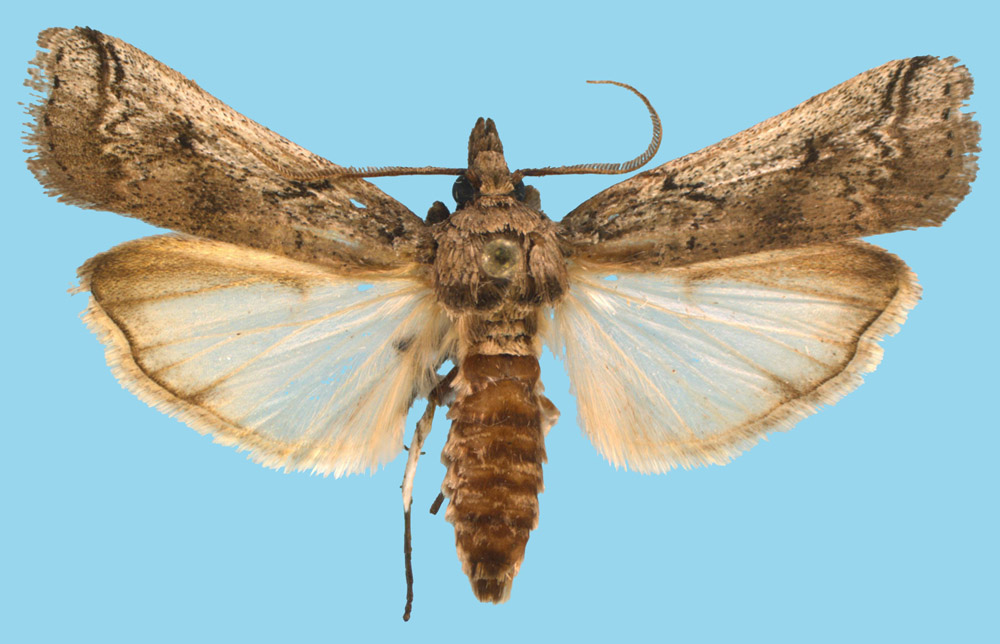Melitara prodenialis Walker
Synonymy and Types
Melitara prodenialis Walker, 1863, List of Specimens of Lepidopterous Insects in the Collection of the British Museum 27: 137. Type locality: United States. Type deposition: The Natural History Museum, London.
Zophoidia bollii Zeller, 1872, Verhandlungen der Kaiserlich- königlichen zoologische-botanischen Gelsellschaft in Wien 22: 550. Type locality: Texas. Type deposition (unknown).
Diagnosis
Adult
The male antenna is bipectinate in Melitara, Alberada, and Cactobrosis, but the female antenna is bipectinate only in Melitara. Melitara prodenialis can be differentiated from other species of the genus by having a porrect antenna (rather than weakly ascending), the terminal area of the forewing lacking a series of short black, longitudinal lines, and the postmedial line of the forewing shallowly angulate (rather than deeply angulate). The male genitalia of differ from those of Cactoblastis in have a gnathos that is more developed, with both dorsal and ventral projections and having a differently shaped valva. The female genitalia has a corpus bursae without a signum. This is the only species of Melitara in eastern United States (Neunzig, 1997).
Larva
Head yellowish brown, darker reddish brown to black near mouthparts and near stemmata. Body dark bluish to bluish black. Early, unpigmented instars of M. prodenialis usually have a dark reddish brown head, whereas those of C. cactorum have a black head.
Morphology Images
Adult
Morphological Comparisons of Melitara prodenialis and Cactoblastis cactorum
Head
Prothorax
Mesothorax
Metathorax
Abdomen
Female papillae anales
Larva
Comparison of Larval Sensilla on Mouthparts of Cactoblastis cactorum and Melitara prodenialis.
Distribution
This species occurs from southeastern New York to Florida along the Atlantic coastal plain, and west to eastern Oklahoma and north-central and southeastern Texas, but it is most common in the southeastern coastal plain (Neunzig, 1997).
Life History and Larval Hosts
Life History
Eggs are deposited in the form of an egg-stick, and each a female deposites an average of two eggsticks, each composed of about 30 eggs. Larvae are gregarious within the cladode, and may feed in several clododes to complete development. In Arkansas larvae overwinter as 1st-3rd instars (Carleton and Kring, 1994). Pupation occurs in a silken cocoon on the surface of the soil under a dead cladode or other debris. The species has two generations annually throughout most of its range, but has three generations annually in Florida. In Arkansas flight periods of adults are June-July and September-October (Carleton & Kring, 1994).
Hosts
Opuntia humifusa var. ammophila (Small), O. humifusa var. austrina (Small), O. macrorhiza Engelmann, O. pusilla (Haworth), O. dillenii (Ker-Gawler), and O. sticta (Haworth) (Neunzig, 1997).
References
Carlton & Kring (1994), Neunzig (1997), Walker (1863), Zeller (1872)


